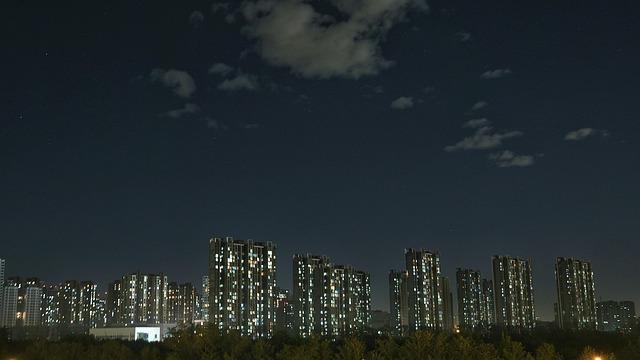High-Rise Living in Nairobi’s Pipeline Estate: Stress and Coping Strategies Among Residents
Nairobi’s Pipeline Estate has become a notable symbol of urban growth, with its skyline punctuated by high-rise buildings that house thousands of residents seeking modern living. However, this burgeoning metropolis is not without its challenges. As increasing numbers of families move into these high-density developments, many are discovering that life in the clouds comes with its own set of stresses. From the daily grind of commuting to crowded public spaces and concerns regarding security, the pressures of high-rise living are palpable. This article explores how both men and women navigate the complexities of urban life in Pipeline Estate, shedding light on their coping mechanisms, community dynamics, and the resilience that emerges amidst the hustle and bustle of Nairobi’s fast-paced environment.
High-Rise Living in Nairobi’s Pipeline Estate and the Daily Struggles Faced by Residents
The experience of high-rise living in Pipeline Estate is a double-edged sword for many residents. While the towering buildings offer panoramic views of Nairobi and a vibrant community, they also bring a unique set of challenges that can wear down even the most resilient individuals. Among the most pressing issues are:
- Infrastructure Strain: The increasing population density is putting significant pressure on existing utilities, leading to frequent water shortages and power outages.
- Traffic Congestion: Limited access roads have exacerbated daily commutes, with many residents spending hours in traffic.
- Security Concerns: As urbanization escalates, so do worries about safety, prompting many to invest in additional security measures for their homes.
Residents employ various coping strategies to navigate these daily struggles. Many have turned to community-building initiatives, fostering tighter neighborly bonds that provide emotional support and practical assistance. Some of the innovative solutions include:
- Local Carpool Systems: To combat traffic woes, residents have organized informal carpooling arrangements, significantly reducing commuting times.
- Water Rationing Techniques: In the face of water shortages, many households have adopted rainwater harvesting and efficient storage systems.
- Neighborhood Watch Groups: To enhance security, residents have established collaborative vigilance, where members take turns monitoring their blocks.
Coping Mechanisms Employed by Men and Women in High-Density Housing
Living in high-rise apartments in Nairobi’s Pipeline estate presents unique challenges, prompting residents to develop specific coping mechanisms tailored to their gender experiences. Men often resort to activities that foster social connections and reinforce their roles in the community. These may include:
- Sports and Recreation: Engaging in team sports or casual games with friends helps alleviate stress and build camaraderie.
- Community Engagement: Participating in local meetings or volunteer efforts fosters a sense of belonging and purpose.
- Homemade Solutions: Some men take to DIY projects in their homes, channeling frustrations into creative outlets.
Conversely, women in high-density housing often employ more nurturing and communal strategies to cope with stress. Their approaches include:
- Support Networks: Forming close-knit groups with neighbors for emotional support and shared childcare responsibilities helps in managing daily stresses.
- Mindfulness and Relaxation: Engaging in yoga or meditation practices in communal spaces allows women to find calm amidst the chaos.
- Cultural Gatherings: Organizing cultural events or potluck dinners enhances community ties while celebrating shared backgrounds.
These varied coping strategies highlight how gender influences responses to the pressures of high-density living, shaping not only individual well-being but also community dynamics.
Strategies for Enhancing Quality of Life in Urban High-Rise Environments
Urban high-rise environments offer both challenges and opportunities for residents. To enhance quality of life in such settings, it’s essential to focus on community engagement and environmental design. One effective strategy involves creating shared spaces that encourage social interactions among residents. Incorporating features such as:
- Rooftop gardens for relaxation and community gardening
- Fitness stations to promote physical health
- Common lounges for informal gatherings
Additionally, improving the building’s acoustics and air quality can significantly alleviate the stress associated with high-density living. Implementing these features not only supports mental well-being but fosters a sense of belonging and identity among residents, ultimately transforming urban high-rises into vibrant communities.
Another important aspect to consider is the integration of smart living technologies, which can streamline daily routines and improve overall convenience. Through the adoption of:
- Smart home systems that control lighting and temperature
- Apps for community services that facilitate easy access to maintenance or social events
- Safety and security features such as surveillance and emergency alerts
these tools not only enhance security but also allow residents to manage their environments more effectively. As urban centers like Nairobi’s Pipeline estate continue to grow, implementing these strategies could redefine the high-rise living experience and significantly reduce the stress often associated with it.
In Retrospect
In conclusion, while high-rise living in Nairobi’s Pipeline estate presents unique challenges, residents have developed diverse coping mechanisms to navigate the stresses of urban life. From community support networks to individual strategies for managing daily pressures, both men and women demonstrate resilience in the face of adversity. As urbanization continues to shape the landscape of Nairobi, understanding the dynamics of high-rise living becomes essential for policymakers and community leaders. By addressing the concerns of residents and fostering an environment conducive to well-being, Nairobi can pave the way for a more harmonious urban future. As we have seen, the human spirit’s adaptability shines brightly, even amidst the complexities of high-rise living.
